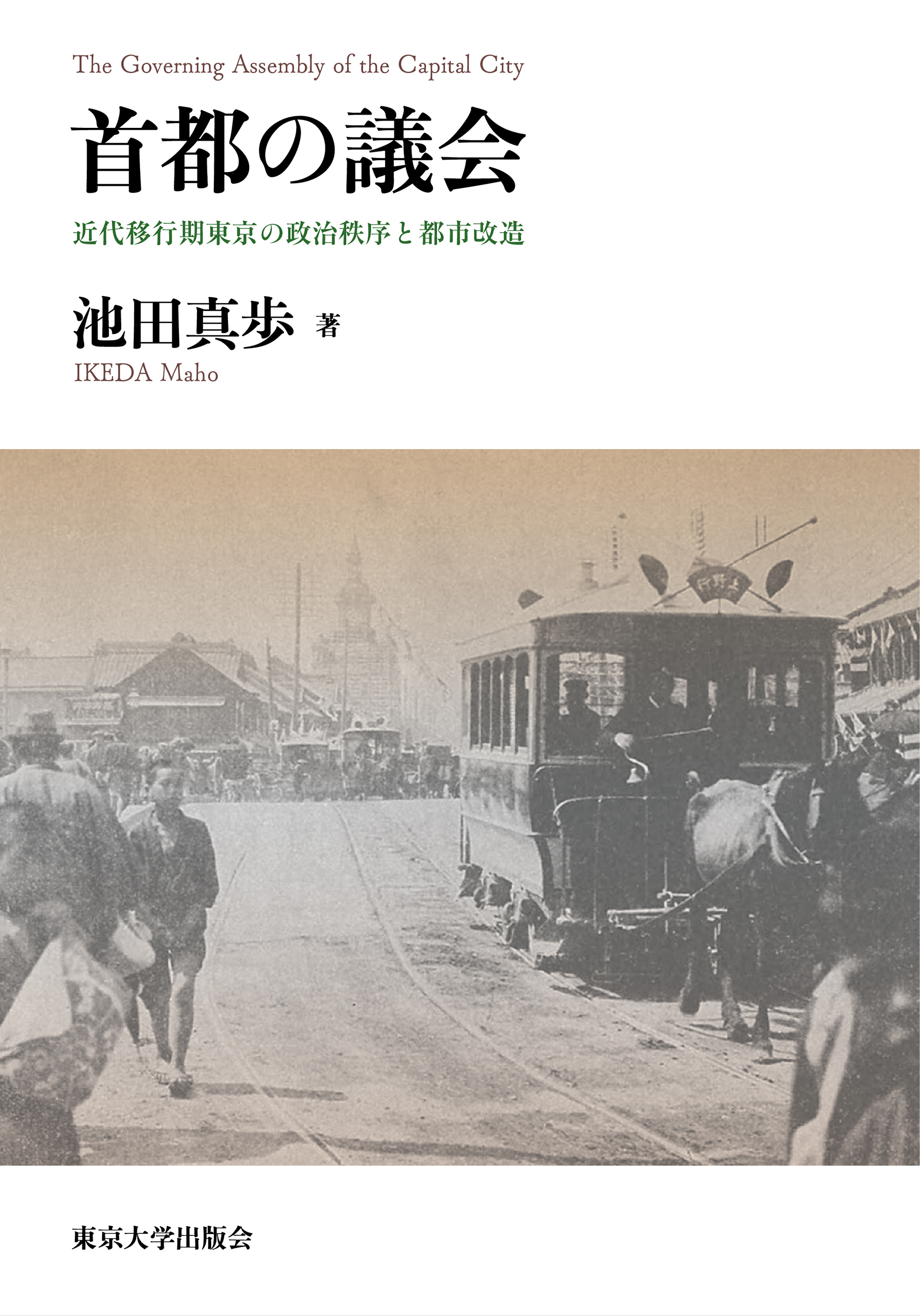
Title
Shuto no Gikai (The Governing Assembly of the Capital City - Political Structure and Urban Renovation in Nineteenth-Century Tokyo)
Size
384 pages, A5 format
Language
Japanese
Released
March 29, 2023
ISBN
978-4-13-026612-3
Published by
University of Tokyo Press
Book Info
See Book Availability at Library
Japanese Page
This book depicts the beginning of Tokyo’s governing assembly and explores the transitional period experienced by people inside and outside the assembly. Following the Meiji Restoration in 1868, Edo-Tokyo, previously "the Shogun's own city," became the imperial capital. Focusing on the process by which the city underwent physical and political transformations, this book examines the ups and downs of the local assemblies, namely the Tokyo Council (Tokyo Kaigisho), Tokyo Prefectural Assembly, and Tokyo Municipal Assembly, which played a crucial role in shaping the city over the course of 30 years.
Edo-Tokyo underwent a significant transformation in the late nineteenth century as extensive modernization projects took place. The cover image of this book is a photograph taken in 1900 of one of Tokyo's largest avenues, extending from Nihonbashi to Ginza. The elements depicted, such as railway carriages, telegraph poles, and brick clock tower, did not exist 30 years ago. The physical environment of the city has changed from one that should be maintained through repeated repairs to one that requires remodeling to achieve modernization.
Furthermore, the nature of the public authority that determined the plans for the renovation of the city and imposed burdens on its citizens changed dramatically. Earlier in Edo, each of the more than 1,000 towns maintained their space at their own cost, supervised by a limited number of samurai officials at the town magistrate's office. However, this system collapsed after the feudal system was abolished. Instead, a modern administrative institution that governs the entire city gradually developed. The legislative body is an essential part of the new institution.
I find the assemblies in Tokyo during this period intriguing because they reflect the conflicts and disruptions emblematic of a society in the midst of modernization.
In the first half of this book, pre-modern and modern elements are intertwined in various ways. The former town elders of Edo were involved in the attempt to reorganize the Edo Town Office (Edo Machi Kaisho), which was responsible for managing the relief fund (shichibu tsumikin) collected from landlords, and to create a new system for civil engineering projects. Former shogunal retainers struggled to establish an elected assembly in Tokyo without waiting for national initiatives. When the Tokyo Prefectural Assembly was established, former samurai assembly leaders, who tried to promote urban renewal while minimizing taxes, found the former relief fund to be a useful resource, but clashed with former townsmen who believed the fund should be used solely to help the poor. Meanwhile, in the local communities surrounding the assembly, wealthy residents from diverse backgrounds began to gather socially and politically in the 15 newly established wards.
The latter half of this book focuses on the impact of the industrial revolution which shook up the assembly. In step with the nationwide trend of modern infrastructure becoming something that people desperately seek rather than something that the government forcefully imposes, the influx of population, commercialization of land, competition for intra-city railways, and the expansion of urban administration have changed the basic conditions in Tokyo. As the changes gained speed, there was a growing claim that the urban administration should develop the city and overcome competition with other cities without hesitating to increase taxes. Newspapers and business leaders called for accelerating urban renovation projects, and The Tokyo Municipal Assembly, which had previously attempted to slow down the projects, was denounced as the root cause of "municipal mismanagement." The Liberal Party saw an opportunity to expand its influence in rural areas by taking advantage of the increasing dissatisfaction and complex interests. However, the party, which once successfully dominated the assembly, soon faced the backlash of ward-based residents who showed unexpected mobilization power.
Rather than detailing the accomplishments of the assemblies of Tokyo, this book centers on the emergence and escalation of conflicts and rivalries within and beyond them. The book portrays the early years of the assemblies as a challenging process in which the political arena in the city grew in significance and became more difficult to control, amidst the absence of established “rules of the game” for political competition and a booming capitalist economy. I hope that this historical process will appeal not only to Tokyo's history enthusiasts but also to individuals with diverse expectations, discontent, or a sense of uncertainty concerning current national and local legislative bodies.
(Written by: IKEDA Maho / April 28, 2023)
Related Info
The 3rd UTokyo Jiritsu Award for Early Career Academics (The University of Tokyo 2022)
https://www.u-tokyo.ac.jp/ja/research/systems-data/n03_kankojosei.html
The 49th 2023 TIMR Fujita Award (The Tokyo Institute for Municipal Research Aug 2023)
https://www.timr.or.jp/research/fujita_award.html
The 45th Suntory Prize for Social Sciences and Humanities, History and Civilization (Suntory Foundation Nov 14, 2023)
https://www.suntory.com/sfnd/prize_ssah/list.html




 eBook
eBook